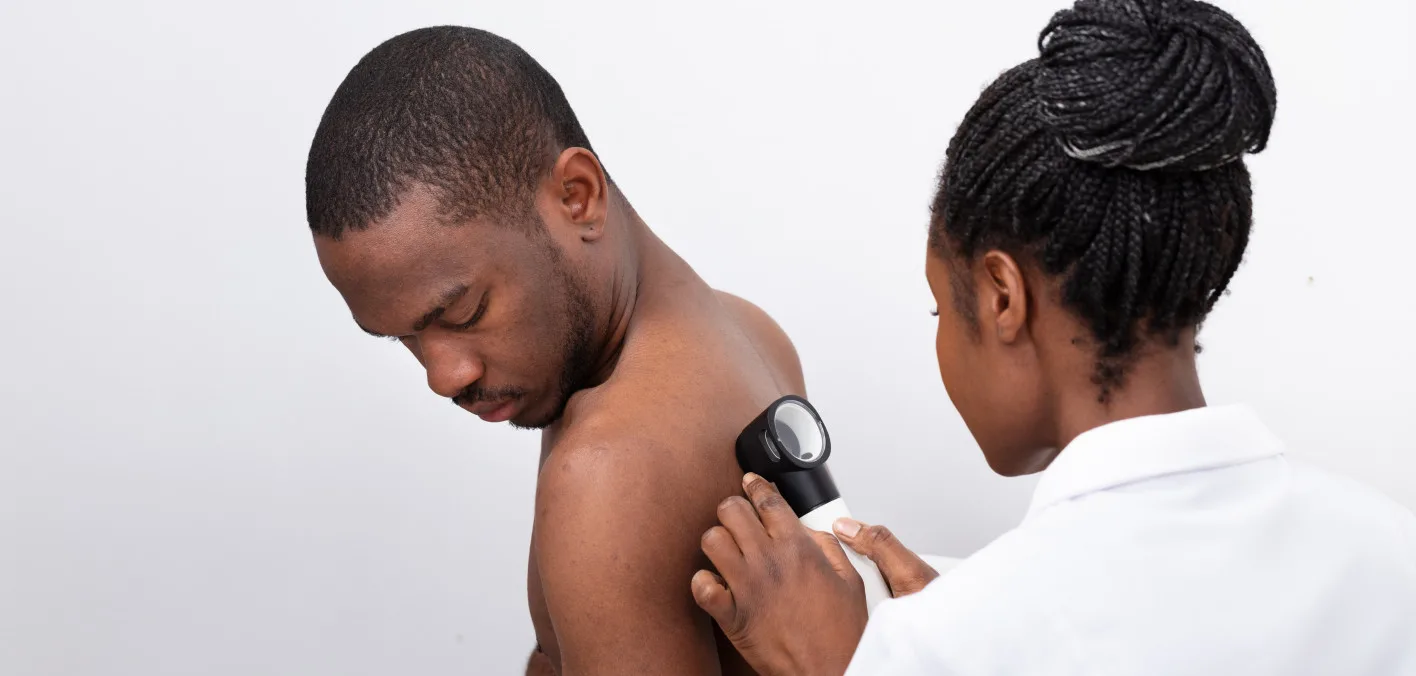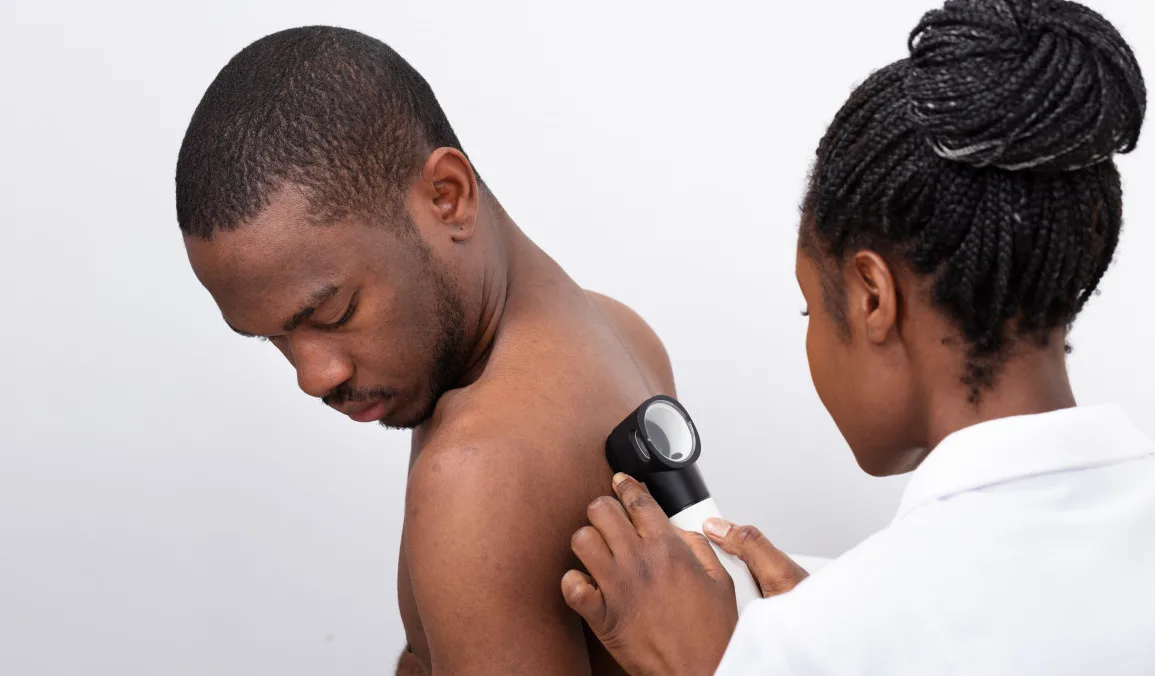
Although melanoma has one of the highest survival rates of the major cancers diagnosed in the United States, a study found that Black men diagnosed with malignancy have about a 26% higher risk of dying compared with white men, according to Time magazine.
Published in the Journal of the American Academy of Dermatology, the study examined racial and gender disparities that have been seen in melanoma survival rates. For example, research shows that men have lower chances of surviving melanoma than women.
To understand why, researchers analyzed data from more than 205,000 men diagnosed with melanoma from 2004 to 2018. The study is among the largest to focus on melanoma in U.S. men, coauthor Ashley Wysong, MD, MS, chair of the University of Nebraska Medical Center’s dermatology department, told Time.
Researchers found that men of color had significantly lower odds of living five years or longer after diagnosis. The five-year overall survival rate among Black men diagnosed with melanoma was about 52%, compared with white men who had a 75% five-year overall survival rate. American Indian/Alaska Native, Asian and Hispanic men had survival rates between about 66% and 69%.
Researchers suggest the fact that men of color are often diagnosed with melanoma later than white men may be to blame for this disparity. Although melanoma is typically more common in white adults, research suggests that Black adults are more likely to be diagnosed with late-stage disease, possibly due to a lower perceived risk and inadequate health care access. What’s more, many health care professionals are not properly trained to identify cancers on non-white skin.
“The further along it is…the poorer overall survival is, in general,” Wysong said.
Wysong said that while more research is required to determine the reasons why melanoma survival rates vary by race and gender, people should educate themselves on how to spot melanoma on their skin as well as on less commonly inspected areas like on the eye or under nails.
“Watch for anything new, growing, changing, bleeding, not healing, not part of your normal skin,” Wysong said.
She also suggested limiting sun exposure and wearing protective clothing, hats and sunscreen with an SPF of at least 30, which the American Academy of Dermatology recommends for all people regardless of gender, age or race.


